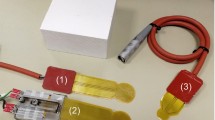Abstract
A round robin test is presented comprising comparative measurements using hot extraction at different degassing temperatures as well as the mercury method. A major focus of the investigation was verification of the maximum degassing temperature for analysing the diffusible hydrogen in weld metals with bcc-lattice structure. The analyses were executed using a basic stick electrode with high weld metal cracking, a high-alloyed supermartensitic filler wire with different hydrogen contents in the shielding gas and a high-strength solid wire. The results show that degassing temperatures of 150 °C and 400 °C do not lead to an increase in the measured contents of diffusible hydrogen as compared to measurements at room temperature. The measuring techniques and procedures specified in ISO/DIS 3690:2009 for determining the diffusible hydrogen content in weld metals with bcc-lattice structure yield approximately the same results. This is to say that the mercury method and the hot extraction methods with thermal conductivity detector (TCD) can be regarded as equivalent reference methods.
Similar content being viewed by others
References
ISO/DIS 3690:2009: Welding and allied processes — Determination of hydrogen content in arc weld metal, [Revision of second edition (ISO 3690:2000)].
Ström C, Elvander J.: Calibration and verification of the hot extraction method including a comparison with the mercury method, IIW Doc. II-1543–04, 2004.
Jenkins N., Hart P.H.M.H., Parker D.H.: An evaluation of rapid methods for diffusible weld hydrogen, Welding Journal, 1997, vol. 76, no. 1, pp. 1s–10s.
Hart P.H.M.H., Parker D.H.: Rapid methods for diffusible hydrogen measurements in standard test welds. Final report part 1, TWI report 5612/6A/92, 1992.
Coe F.: Hydrogen measurements-current trends versus forgotten facts, Metal Construction, 1986, vol. 18, no. 1, pp. 16–19.
Fiedler M., Schafzahl D., Fischer J., Posch G., Berger W.: Gefahrenquelle „Wasserstoff“ bei der Schweißung von unlegierten Stählen, Teil 1: Einfluss der Schweißbedingungen und Elektrodenbehandlung auf den Wasserstoffeintrag ins Schweißgut bei Verwendung von Stabelektroden, Hazard source „hydrogen“ during welding of unalloyed steels, Part 1: Influence of welding conditions and electrode treatment on hydrogen entry into the weld metal when using stick electrodes, Schweiss- & Prüftechnik 08, 2007, (in German).
van der Mee V: Round robin on effect of atmospheric storage condition on weld metal diffusible hydrogen content of gas shielded cored wires — A study for IIW Subcommission IIA, IIW Doc. II-1523–04, 2004.
Elvander J.: Experiences from accelerated test methods at elevated temperatures, IIW Doc II-1633–07, 2007.
ISO 5725–2:2002: Accuracy (trueness and precision) of measurement methods and results — Part 2: Basic method for the determination of repeatability and reproducibility of a standard measurement method, 2002.
Author information
Authors and Affiliations
Corresponding authors
Rights and permissions
About this article
Cite this article
Kannengiesser, T., Tiersch, N. Comparative Study between Hot Extraction Methods and Mercury Method — A National Round Robin Test. Weld World 54, R108–R114 (2010). https://doi.org/10.1007/BF03263496
Published:
Issue Date:
DOI: https://doi.org/10.1007/BF03263496




